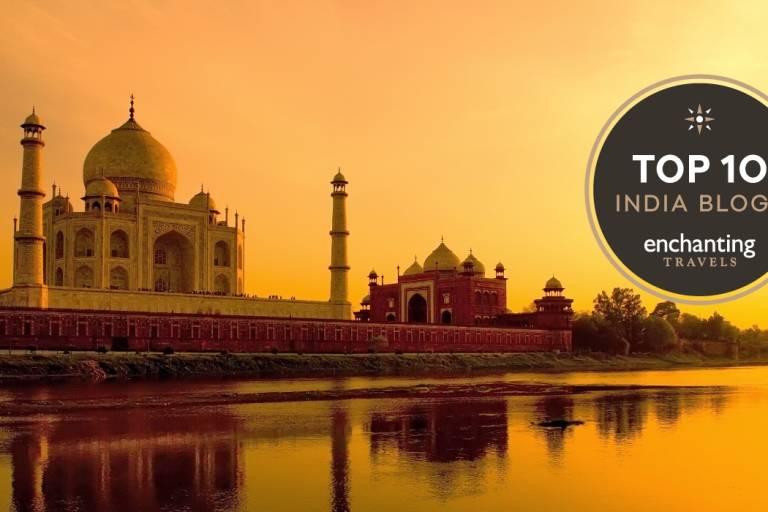Travelling out of season to sunny southern Spain can make for a superb short break, as our writer discovers when he explores Andalucía’s hill towns
Plus: off-season breaks to Corsica, Portugal and Italy

The roads were calm and uncluttered, minutes passed before another vehicle appeared. On the horizon the Sierra Nevada rolled along in the sunlight, still snow-capped and blue-hued in places. Outside the car was the countryside of rural Andalucía, with its olive and almond groves, and spaghetti western-like terrain. I drove the narrow, cobbled roads into Alhama de Granada’s main square, Plaza Constitucion, and parked with ease, ready to explore this small hill town with its Moorish quarter, the Iglesia del Carmen and dramatic views of Los Tajos (the gorge).
The joys of this out-of-season break extended beyond the uncongested roads. The temperature was a pleasant 20C, the sunshine was constant, other tourists were few and the pace of life had shifted down a couple of gears. Yet, I had not driven to the back of beyond to get here: around 45 minutes’ drive in a hire car from Málaga airport had taken me to my base, the town of Archidona. The capital of Málaga province during Moorish rule, it’s now a regular working town with a population of around 9,000 and a reassuringly light dash of tourism.
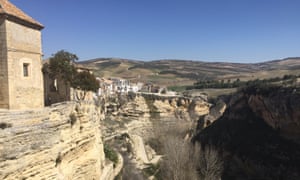
I checked in at Almohalla 51, a five-bedroom boutique guesthouse – comprised of two renovated townhouses – run by David Matthews and Myles Rainford. The whitewashed walls, exposed beams and stone-tiled floors make for a calming retreat. The house is on several levels and has a higgledy-piggeldy feel, with nooks to read in. There is also a shaded patio, a terrace to soak up the sun and a plunge pool.
I preferred to keep cosy by the woodburner – the daytime was mild but after sundown there was a chill. My fireside reading included Washington Irving’s Tales of the Alhambra; first published in 1832, the book’s essays and short fiction detail the American writer’s journey through this part of Spain, and helped inspire David and Myles’s Andalucía: the Roads Less Travelled package. The four-night, off-season itinerary explores some of Andalucía’s lesser-known small towns, which are often as historic, beautiful and architecturally interesting as the region’s big hitters: Seville, Granada, Córdoba and Ronda. The routes include driving instructions, sights, and tips on where to eat. None were much more than an hour or so from Archidona and easy to explore on the empty roads.
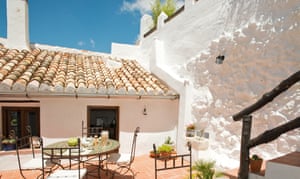
The highlight was Setenil de las Bodegas, a river-gorge town dominated by a hilltop church and a Moorish fort. What stole the show, though, were the houses, shops and bars built into the overhanging rocks of the Cuevas del Sol and Cuevas de la Sombra, either side of the Rio Trejo. At times the labyrinthine streets made Setenil feel like an MC Escher artwork, but losing my way here was an enjoyable challenge not an ordeal, the legwork leading me to Restaurante Palmero and the chance to savour migas. I’d never thought a dish of breadcrumbs would make such an impact but these – slowly fried over a fire with garlic, chorizo and black pudding – were a robust and flavoursome experience.
Antequera, about 25km west of Archidona, offered an Alcazar next to a baroque church (Real Colegiata de Santa María La Mayor) and beside them Roman ruins. In the spring sunshine the view over the town led the eye to dolmens (prehistoric burial grounds with Unesco heritage status pending) and the majestic La Peña de los Enamorados (Lover’s Rock).
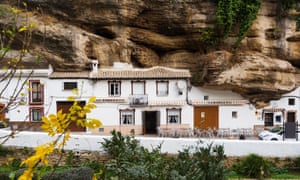
In Osuna, I explored ornate former duke’s palaces on Calle San Pedro, its cathedral and 16th-century university building. But I could also have searched out its bullring, monastery or Plaza Mayor. In fact, had I not chosen Osuna, the routes from Almohalla 51 could have taken me to Estepa, Priego de Córdoba, Olvera or Zuheros. What I discovered was that there was always another hospitable town to visit.
I came to see Archidona as a jumping-off point but made sure I still wandered its winding, occasionally steep streets. I found the calm of Plaza de la Iglesia de Santa Ana and the focal point of Plaza Ochavada, the town’s “octagonal” baroque square. Around here were bars and restaurants, among them the traditional Bar Central, Bar Picasso with its Italian twist, and the contemporary (and remarkable)Restaurante Arxiduna – built into caves that form part of the plaza. Dishes such as foie mille-feuille (€14), pork shoulder crunch (€12) and a distinctive take on a New York cheesecake (€4.50) were simply breathtaking in their flavour, sense of fun and eye-catching presentation.
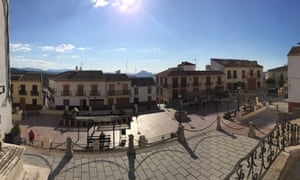
Not every traveller is looking for solitude and tradition – for some there is a need for hubbub and activity. I was aware of that on the occasions I sat in uncrowded cafes, strolled along empty ramparts or chatted to locals. But, as I watched the sunset from the summit of Sierra de Gracia – a brief hike from Archidona – I knew this affordable out-of-season adventure had delivered far more than I had expected and reinforced the idea of how small can often be so beautiful.
•Accommodation was provided by Almohalla 51, which offers Andalucia: the Roads Less Travelled from €300 (£233) in a standard room and €350 (£272) in a superior room. The package includes four nights’ B&B, self-guided itineraries and a copy of Washington Irving’s book Tales of the Alhambra. Rhino Car Hire offers car rental from Málaga airport from £25 a week
Marvão, Portugal
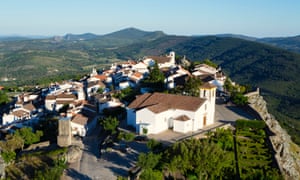
Dreamy castles and ducal palaces. Forests of cork oak grazed by wild boar. Fragrant meadows brilliant with salvia and silene. It’s a wonder the Alentejo, in southern Portugal, isn’t as crowded as Tuscany. Perhaps it’s because temperatures – away from the coast – soar to a 40C in summer.
Which is why I’ve chosen spring, when it’s pleasantly warm in the village of Marvão on the Spanish border. From Lisbon, I drove here in just under two hours via an empty motorway then a winding mountain road into the Serra de Estrela hills, which cut through little whitewashed villages and terraces of vineyards green with young leaves. I stopped at the Roman ruins of Ammaia: a shamble of rubble that was once a great trading town, and took a detour to the Menhir da Meada, a seven-metre-high digit of weather-worn neolithic stone towering over a lonely landscape of butterfly-filled fields.
Then I saw Marvão and it looked spectacular, even from a distance: a jagged crenulation of church towers and fortified walls silhouetted against a deep yellow afternoon sun.
Beyond the bastions, Marvão is a scatter of sugar-white houses, cut by half a dozen mule-cart wide streets and ringed with rugged walls put up by the Moors nearly 1,000 years ago. The ridgetop where it sits ripples into low hills that run to the horizon, where the setting sun oozes orange, gilding the whitewash of the village bell-towers. In the chilling air I descended to the village, footfalls echoing off the stone walls, and to Pousada de Marvão, the town’s only hotel, for port by a crackling fire and a dinner of ensopado de borrego (lamb hotpot).
•Sunvil has three nights at Pousada de Marvão B&B from £510pp including flights and car hire
Alex Robinson
Calvi, Corsica

The way Parisians talk about it, Corsica is the place to come to in summer. July heralds the electronic music festival Calvi on the Rocks, while August empties the city of its locals and dumps them on Mediterranean beaches. My partner and I had always longed to experience the island’s dramatic landscape, a juxtaposition of sea and mountains, but peak-season flights were too expensive. Luckily, Corsican friends from Calvi and the surrounding Balagne region let us in on a secret: the year-round temperate climate makes the area great for off-season sunshine.
We flew in early October, with Calvi as our base. Many of its businesses are open year-round and the town is all the more delicious without the crowds. This is especially true of the citadel, Calvi’s pièce de résistance: a fortified labyrinth of cobblestone streets with impressive views of the city and the sea.
Exploring the rest of Balagne in our rental car, we discovered the Village d’Occi, a ghost town built in the middle ages and abandoned in the early 19th century, set against a panoramic backdrop. We continued up the coast to L’Île Rousse, known for its port, quaint streets and views of the big blue from its lighthouse. I was envious of the people swimming off the glistening shoreline, but my partner preferred to venture into the mountainous inland where villages perched in the clouds are as striking at a distance as they are up close. We spent our remaining days roaming from artist studios to vineyards to olive oil mills. Most of these are open all year, as Corsican culture does not ebb with the tourists.
The only letdown was our Airbnb; when we return – and we’re definitely returning – I’m going to try the Hostellerie de l’Abbaye, a centrally located four-star hotel that has doubles from €120.
Rozena Crossman
Gubbio, Umbria
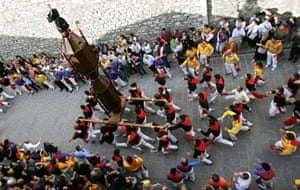
Having escaped the crowds of tourists in nearby Perugia, arriving in Gubbio, Umbria’s oldest town, brings a sense of discovery and achievement. But while it remains largely off foreigners’ radar, Italians flock to Gubbio during the country’s insufferably hot summers.
The cooler spring months are undoubtedly the best time to visit, when the lush countryside is at its most beautiful and Gubbio hosts its two most important events. The highlight comes on 15 May, when men charge through town bearing three huge wooden structures topped with statues of saints on the Ceri run, as a crowd lining the route roars them on. Another unmissable day comes on the last Sunday in May, when the town’s Crossbow Festival sees locals compete in the main square. Expect period dress and ceremonial flag-waving, too.
We headed to the 15th-century Ducal Palace, whose wooden study was deemed so exceptional it was shipped off to New York’s Metropolitan Museum of Art. Thankfully, the replica produced by the town’s artisans is equally impressive. Nearby stands the Civic Museum, where we sought out the bronze Eugubine Tablets, written between the third and first centuries BC in the local language. This grand palace also affords views across to Gubbio’s ancient theatre, a sign of the importance of the town to Rome.
A springtime trip to Gubbio wouldn’t be complete without a lengthy lunch along one of its narrow streets, and so we grabbed an outdoor table at Taverna del Lupofor its truffle-infused dishes. A hearty plate of pasta can be walked off by climbing the mountainside (or taking the cable car if you’ve over-indulged) – up to the Basilica of Sant’Ubaldo, where the Ceri structures are kept safe.






